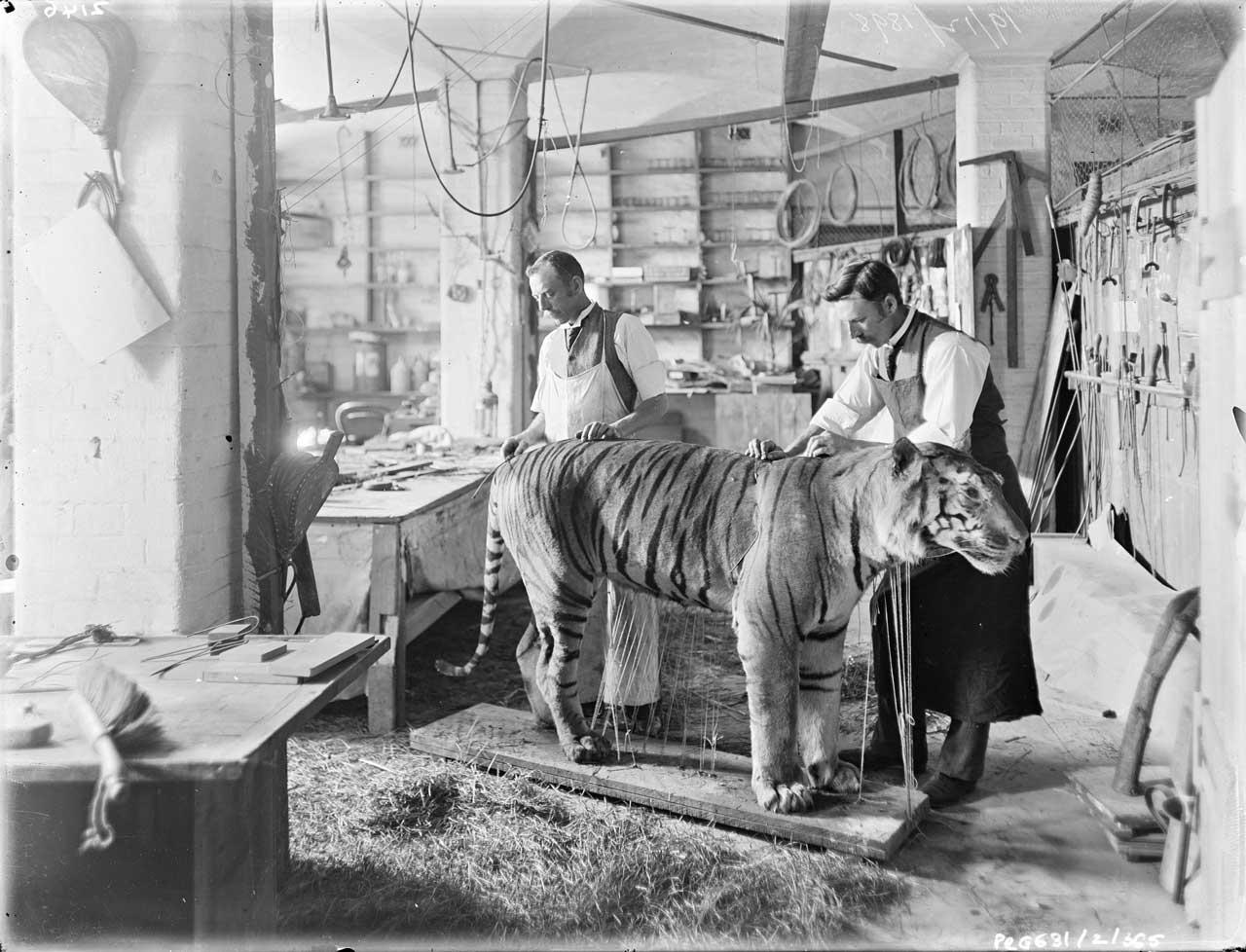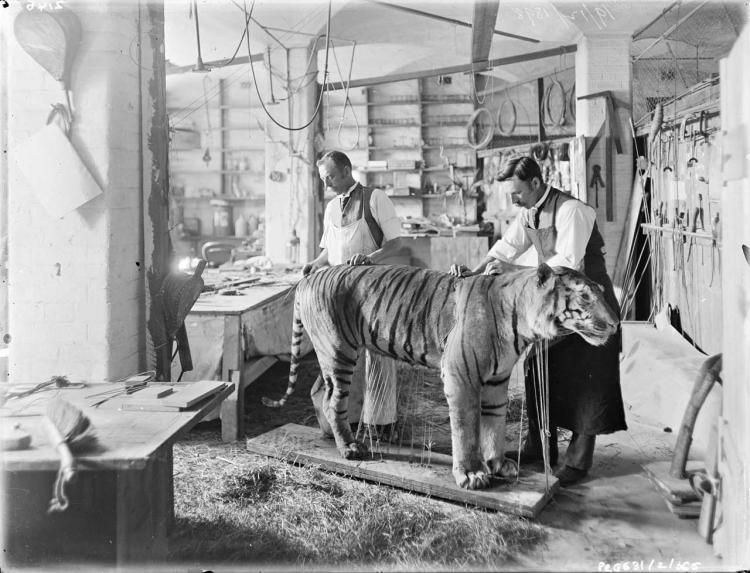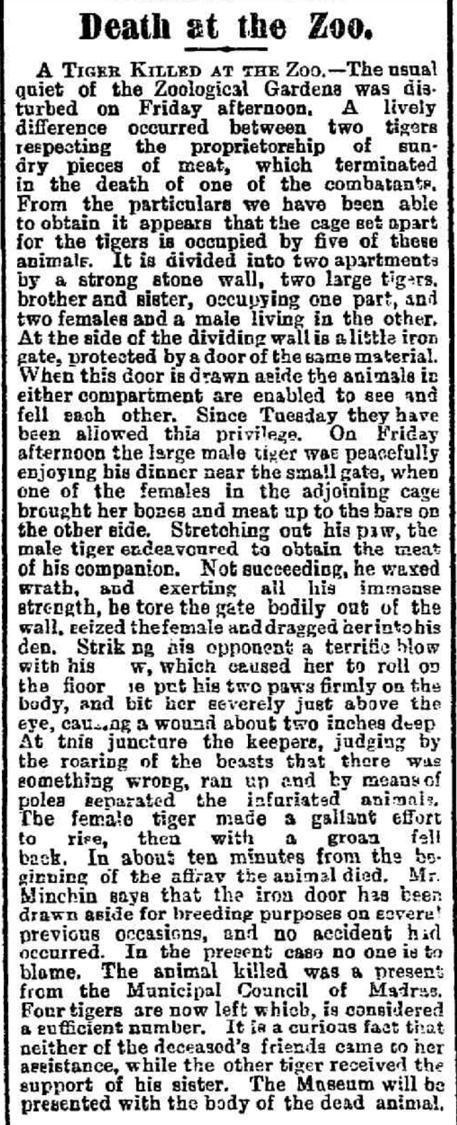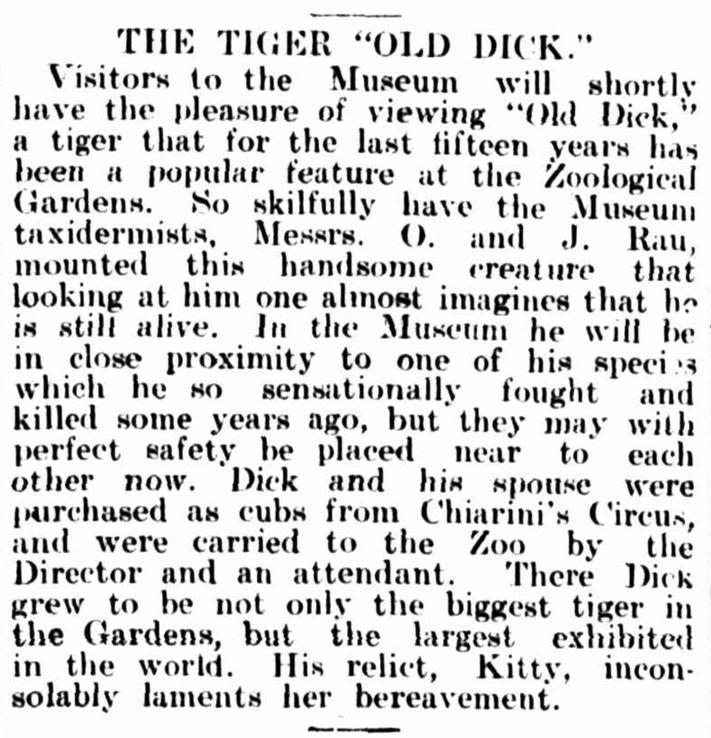- What's On
- Collections
- Research
- Stories
- Visit us
- About Us
- Get involved

Did you know that this photograph taken in the basement of the Mortlock Wing of the State Library shows one of the largest tigers ever exhibited?

There is an interesting story behind the image.
Signor Giuseppi Chiarini was the impresario of the famous Royal Italian Circus which travelled the world, making its final appearance in Adelaide in May-June 1884. Two tiger cubs, male and female, were obtained from Signor Chiarini’s circus for Adelaide’s Zoological Gardens. The male tiger became known as ‘Old Dick’ and the female, ‘Kitty’.
In 1889 ‘Old Dick’ made the headlines for killing another tiger in the Zoo, which would have been a traumatic situation for the group of five animals. Although not referring to them by their names, the article in the Evening Journal of 18 May 1889 on page 7 observed that the tiger received the support of his sister in the aftermath.

Ten years later ‘Old Dick’ succumbed to old age and was brought to the South Australian Museum for the resident taxidermists to preserve. At that time the Museum, Public Library and Art Gallery were all housed in the Mortlock Wing, and the taxidermists Otto and Julius Rau, plied their trade in the basement, shown above.
An article in the Adelaide Observer of 14 January 1899 page 28 tells us that ‘Old Dick’ was the largest tiger exhibited in the world. The article refers to the tiger’s ‘spouse’ or ‘relict’ Kitty lamenting her bereavement, whereas we know that Kitty was actually his sibling.

Who knew that the tiger in our photograph would have such a spectacular back story? You can still see ‘Old Dick’ on display in the South Australian Museum, where some years ago an artist at the South Australian Museum, the late Madeline Boyce, gave his fading fur coat a lick of paint to show him at his black and orange best.
![Otto Rau standing at left with his brother Julius at right, with Museum Director Edward C Stirling in 1898. [PRG 631/45/39]](/sites/default/files/2021-09/Taxidermists-room-at-the-Museum-slsa-PRG-631-45-39.jpg)
Want to know more?
You can see these two photographs, and many more, in the Mortlock Wing which celebrates South Australia’s rich history through State Library collections.
Thanks to the National Library of Australia’s wonderful free newspaper digitisation website Trove everyone can find stories such as this that bring our history to life.
Written by Carolyn Spooner, Community Learning Librarian